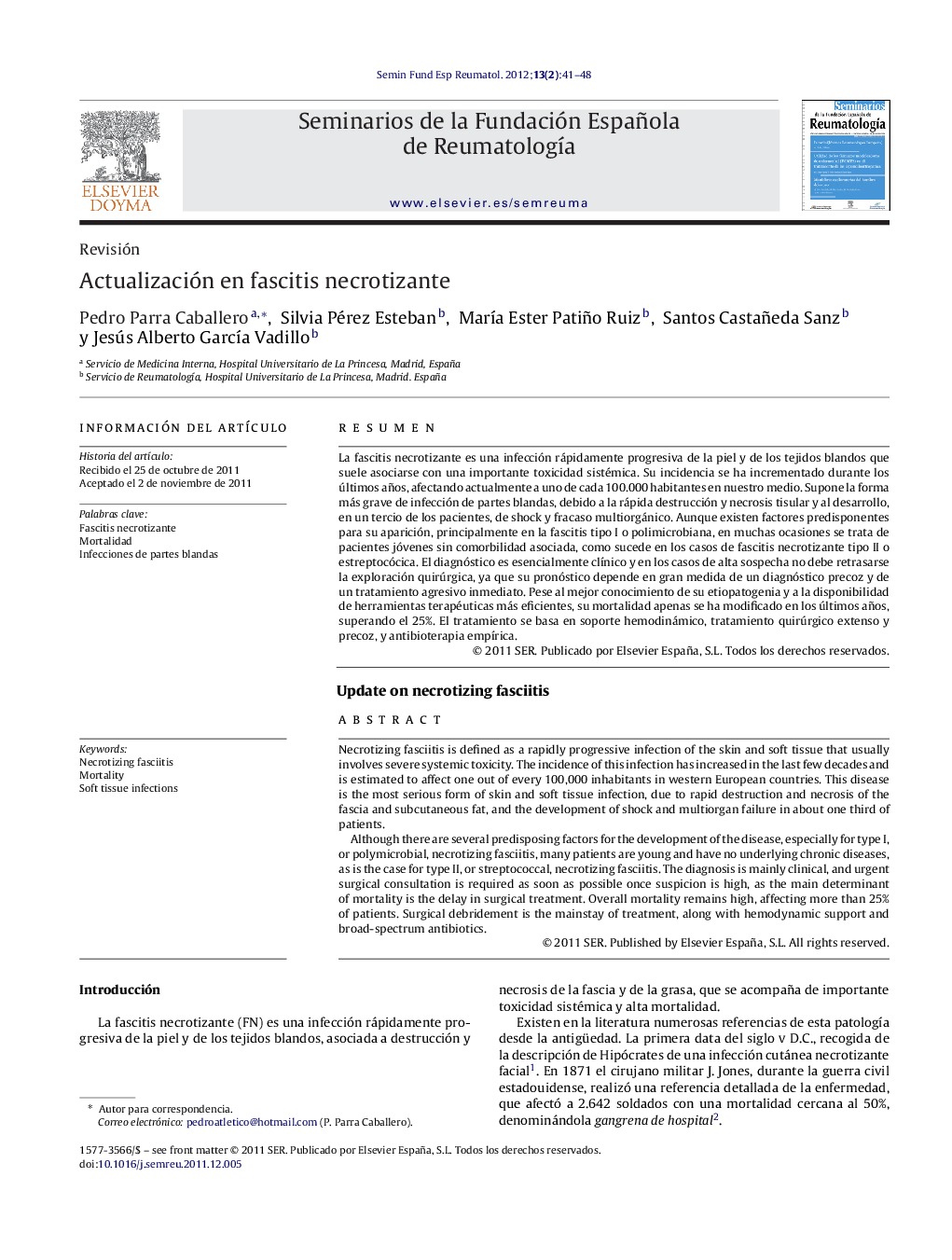| Article ID | Journal | Published Year | Pages | File Type |
|---|---|---|---|---|
| 3390997 | Seminarios de la Fundación Española de Reumatología | 2012 | 8 Pages |
Abstract
Although there are several predisposing factors for the development of the disease, especially for type I, or polymicrobial, necrotizing fasciitis, many patients are young and have no underlying chronic diseases, as is the case for type II, or streptococcal, necrotizing fasciitis. The diagnosis is mainly clinical, and urgent surgical consultation is required as soon as possible once suspicion is high, as the main determinant of mortality is the delay in surgical treatment. Overall mortality remains high, affecting more than 25% of patients. Surgical debridement is the mainstay of treatment, along with hemodynamic support and broad-spectrum antibiotics.
Related Topics
Health Sciences
Medicine and Dentistry
Immunology, Allergology and Rheumatology
Authors
Pedro Parra Caballero, Silvia Pérez Esteban, MarÃa Ester Patiño Ruiz, Santos Castañeda Sanz, Jesús Alberto GarcÃa Vadillo,
